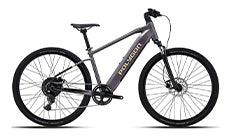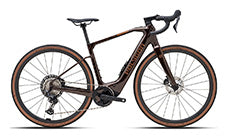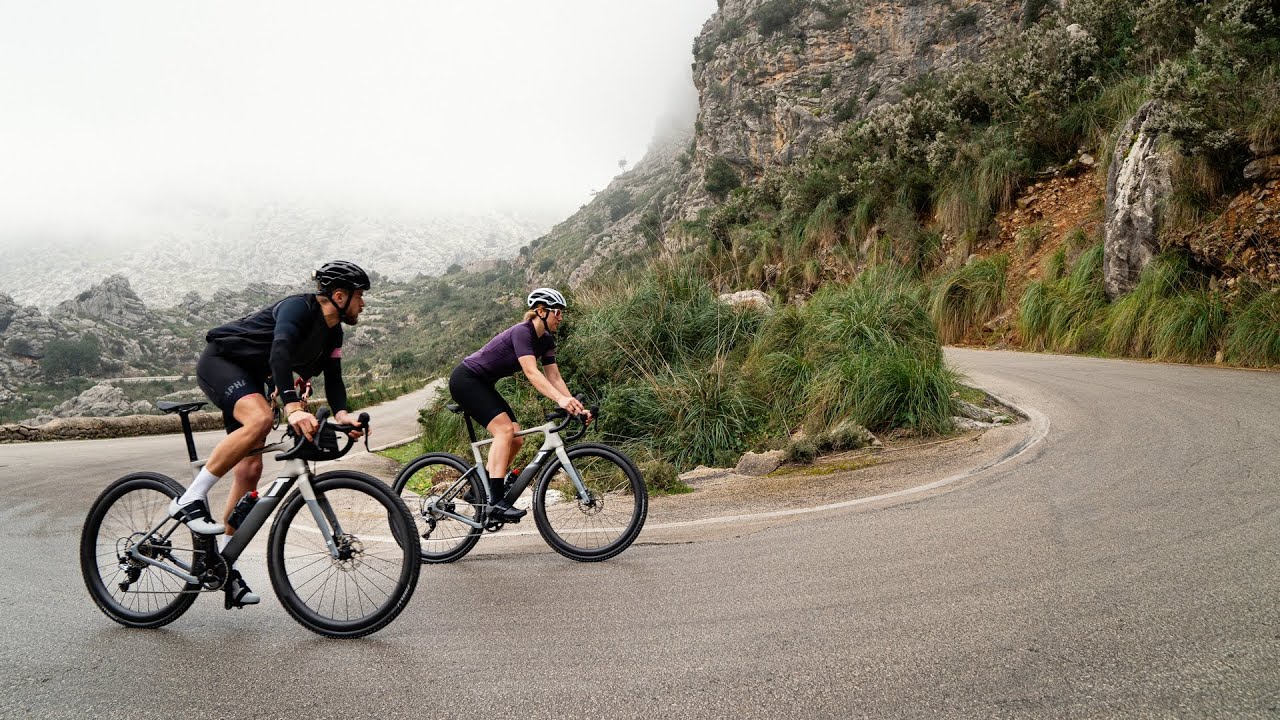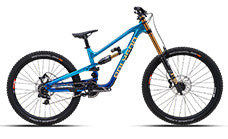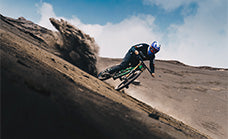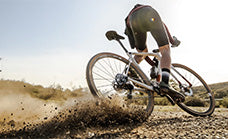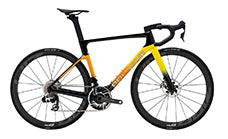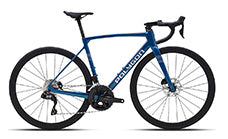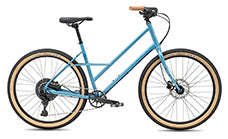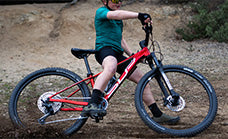Can a Road Bike Go Uphill?

If you're new to cycling, you might wonder: can a road bike go uphill? The answer is a resounding yes! Road bikes are designed for speed and agility on paved surfaces, which makes them excellent for tackling hills. This article will dive into the specifics of why road bikes are capable climbers and how you can make your hill-climbing experience more efficient and enjoyable.
The Design of a Road Bike: An Uphill Advantage
Aerodynamics and Weight
Road bikes are built with sleek, aerodynamic frames that minimize air resistance. This design feature, combined with lightweight materials like carbon fiber or aluminum, makes climbing hills easier as less effort is required to propel the bike forward. The lighter your bike, the less gravitational pull you’ll need to counteract when going uphill.
Another key aspect is the position of the rider. Road bikes allow for a more aerodynamic riding posture, which can be beneficial when facing steep inclines. By reducing wind resistance, you conserve energy that can be directed towards powering through the climb.
Gears: Tailor-Made for Climbing
Modern road bikes come equipped with complex gearing systems. These gears allow cyclists to adjust their pedaling resistance depending on the gradient of the incline. Lower gears make it easier to pedal at a high cadence without exerting too much force, allowing for sustained climbing without exhausting your muscles.
For those who enjoy data, it's fascinating to know that professional road bikes often have gearing setups with a wide range of ratios to handle various terrains effectively. Simplified, this means you can shift to an appropriate gear to maintain consistent effort levels as you ascend different slopes. Understanding how to utilize your gears properly can radically transform your uphill performance.
Cycling Technique for Effective Uphill Riding
Maintaining a Steady Cadence
Cadence, or the rate at which you pedal, plays a crucial role in climbing efficiently. Experienced cyclists aim to maintain a consistent cadence of around 70-90 revolutions per minute (RPM), even when tackling steeper inclines. Shifting down to lower gears helps keep your cadence steady, which prevents muscle fatigue and allows for more sustainable climbs.
High cadence keeps your muscles oxygen-rich and avoids overexertion. Think of it like running at a comfortable pace versus sprinting. You can go longer distances if you manage your speed and effort wisely. Pedaling at a steady rhythm also enhances your overall cycling technique, making each ride smoother.
Sitting vs. Standing
The debate between sitting and standing while climbing is ongoing. Both techniques have their place depending on the situation. Sitting allows you to stay aerodynamic and conserve energy but engages fewer muscle groups. On the other hand, standing offers more power by engaging your glutes and hamstrings but uses more energy.
Combining both methods during a long climb can offer the best results. Standing up during short bursts can give you an extra push over particularly steep sections. When you sit back down, focus on maintaining that steady cadence to recover while still progressing upwards.
The Impact of Physical Conditioning
Building Strength and Endurance
Climbing isn't just about the bike; it's also about the rider's physical condition. Building muscular strength, particularly in the legs, can significantly enhance your uphill capabilities. Exercises focusing on the quadriceps, hamstrings, and calves can translate directly into more powerful pedal strokes on the bike.
Equally important is cardiovascular fitness. Regular cycling builds endurance, allowing you to sustain higher efforts for longer periods. Incorporating interval training into your routine can improve both anaerobic and aerobic capacity, giving you the stamina needed for enduring lengthy ascents.
Nutrition and Hydration Strategies
Fueling your body adequately before and during rides is vital for optimal performance. Eating carbohydrates helps store glycogen in your muscles, providing readily available energy. It's wise to have a small snack rich in carbs before tackling major climbs to ensure you don’t run out of steam halfway up.
Hydration cannot be overstated. Even mild dehydration can impair your ability to maintain effort levels. Carry sufficient water and take regular sips throughout your ride to stay hydrated. Some cyclists use electrolyte drinks to replace salts lost through sweat, further enhancing their endurance.
Adjusting Bike Settings for Climbing Comfort
Saddle Height and Position
Your saddle’s height and position can drastically affect your comfort and efficiency when climbing. A properly adjusted saddle enables maximum power output by optimizing your leg extension. If your saddle is too low, you might feel strain on your knees; if it’s too high, you could lose efficiency and increase the risk of injury.
Specialists recommend fine-tuning your saddle position incrementally. Adjustments as small as a few millimeters can make a big difference. Many bike shops offer fitting services to help you get the best setup for your anatomy and cycling style.
Handlebar Positioning
Proper handlebar height and reach can also enhance your climbing efficiency. Too low handlebars may force you into an aero position that’s uncomfortable for long climbs, while bars set too high could reduce your control over the bike. Finding a balance ensures you maintain good posture, allowing for better breathing and reduced strain on your back and shoulders.
Consider experimenting with spacers under your stem or bars to find your optimal position. Like any adjustment, it’s best done gradually and with attention to how it affects your overall ride quality.
Psychological Factors: The Mental Game of Climbing
Positive Mindset
Mental fortitude is just as essential as physical preparation. Approaching hills with a positive attitude can dramatically change your experience. Instead of dreading the climb, view it as a challenge to conquer. Maintaining a motivational inner dialogue can distract from the discomfort and keep your spirits high.
Visualization techniques can also be useful. Imagine successfully reaching the top before you even start the climb. Such mental imagery can create a sense of achievement and bolster your determination to push through tough sections.
Breaking Down the Climb
Tackling a long, steep hill can be daunting if viewed as a whole. Breaking down the climb into smaller segments can make it seem more manageable. Focus on reaching intermediate goals, such as the next lamppost or tree. This strategy not only keeps you mentally engaged but also provides frequent, small victories along the way.
Cyclists often say, "It's all in your head." Your mind can either set limits or break boundaries. Training it to work in tandem with your body can unlock peak performance, especially during challenging climbs.
Real-World Applications and Tips
Practical Tips for Beginners
If you're new to climbing on a road bike, start with gentler, shorter hills to build confidence and technique. Practice shifting gears and maintaining a steady cadence on these easier inclines before progressing to more challenging terrain.
-
Keep relaxed arms and hands to prevent stiffness
-
Use your entire pedal stroke, pushing down and pulling up evenly
-
Breathe deeply and consistently to maximize oxygen intake
-
Monitor your effort using heart rate or perceived exertion scales
With practice, you'll develop a feel for what works best for your body and biking style. Remember, every hill climbed is a step towards improved skill and fitness.
Advanced Climbing Techniques
Experienced cyclists can benefit from advanced techniques to master challenging climbs. One method is interval training, where you alternate between high-intensity bursts and recovery periods. This type of training mimics the varied effort needed for hilly terrains and can boost your climbing power and endurance.
Another advanced tactic is "tempo riding," where you ride at a moderately hard intensity for extended periods. It increases your threshold, the point at which lactic acid accumulates faster than it can be cleared. The result? You can tackle longer, steeper climbs without burning out.
Finally, acclimating to different types of climbs—whether they're short and steep or long and gradual—prepares you for diverse scenarios. Each type of climb demands a slightly different approach and dialing in these nuances can lead to significant improvements in your cycling technique.


